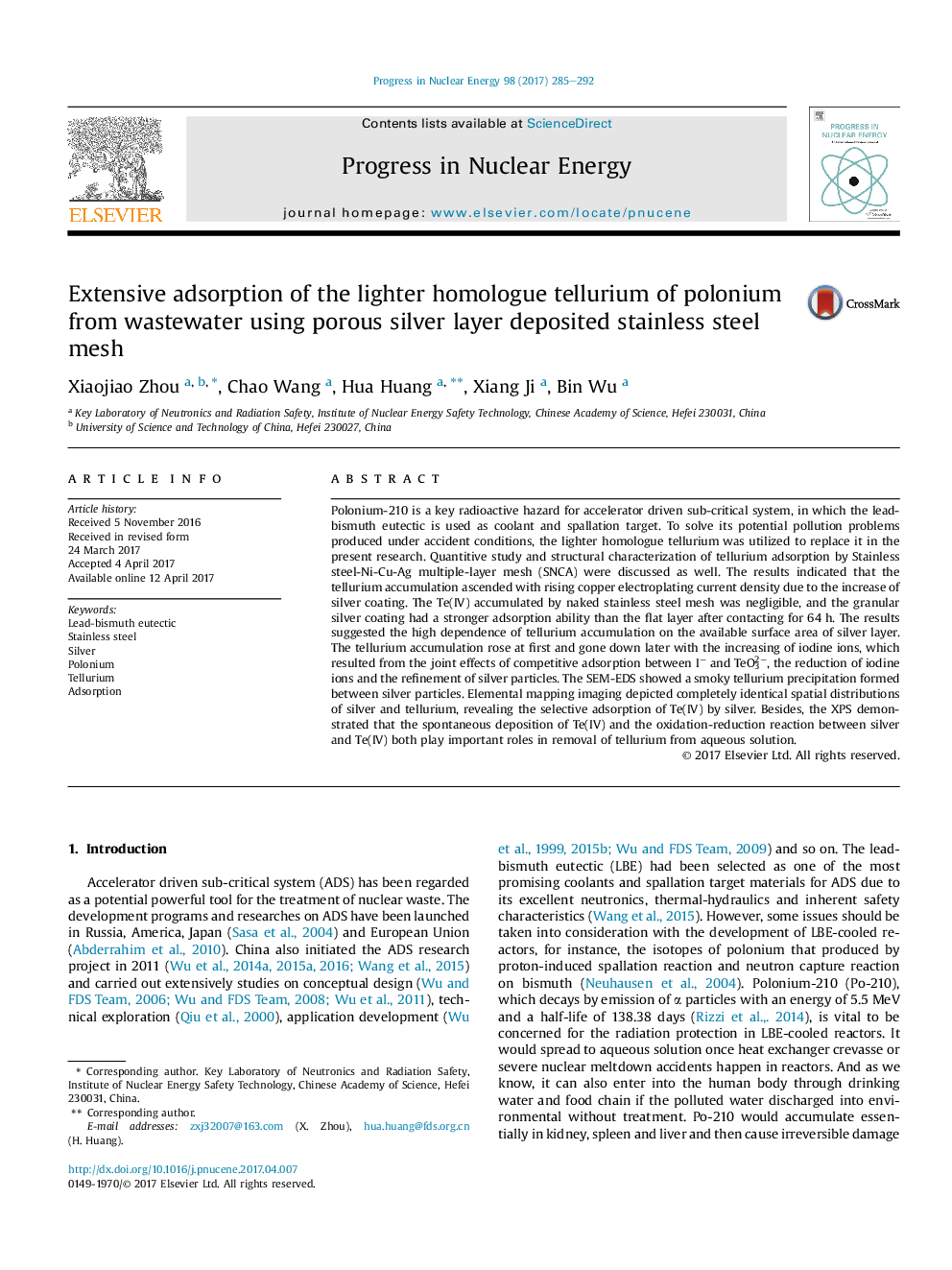| Article ID | Journal | Published Year | Pages | File Type |
|---|---|---|---|---|
| 5478068 | Progress in Nuclear Energy | 2017 | 8 Pages |
Abstract
Polonium-210 is a key radioactive hazard for accelerator driven sub-critical system, in which the lead-bismuth eutectic is used as coolant and spallation target. To solve its potential pollution problems produced under accident conditions, the lighter homologue tellurium was utilized to replace it in the present research. Quantitive study and structural characterization of tellurium adsorption by Stainless steel-Ni-Cu-Ag multiple-layer mesh (SNCA) were discussed as well. The results indicated that the tellurium accumulation ascended with rising copper electroplating current density due to the increase of silver coating. The Te(IV) accumulated by naked stainless steel mesh was negligible, and the granular silver coating had a stronger adsorption ability than the flat layer after contacting for 64Â h. The results suggested the high dependence of tellurium accumulation on the available surface area of silver layer. The tellurium accumulation rose at first and gone down later with the increasing of iodine ions, which resulted from the joint effects of competitive adsorption between Iâ and TeO32â, the reduction of iodine ions and the refinement of silver particles. The SEM-EDS showed a smoky tellurium precipitation formed between silver particles. Elemental mapping imaging depicted completely identical spatial distributions of silver and tellurium, revealing the selective adsorption of Te(IV) by silver. Besides, the XPS demonstrated that the spontaneous deposition of Te(IV) and the oxidation-reduction reaction between silver and Te(IV) both play important roles in removal of tellurium from aqueous solution.
Related Topics
Physical Sciences and Engineering
Energy
Energy Engineering and Power Technology
Authors
Xiaojiao Zhou, Chao Wang, Hua Huang, Xiang Ji, Bin Wu,
